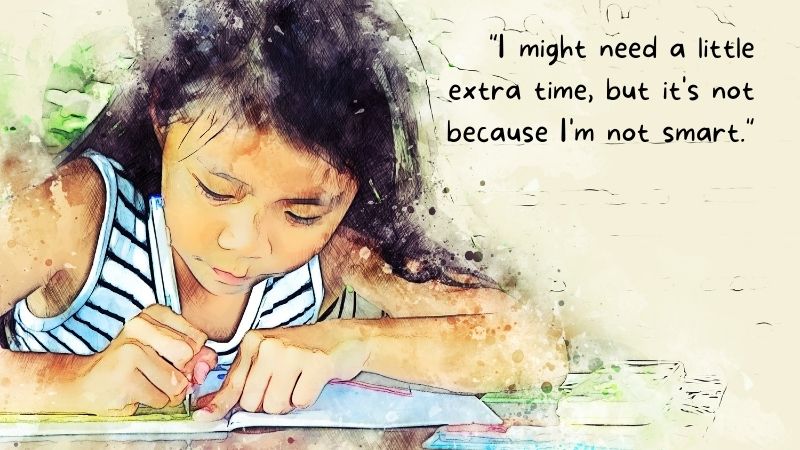Over 10 percent of students in the United States—more than 5.1 million kids and counting—are English language learners (ELLs). And though ELLs don’t learn differently than their native-English-speaking peers, they do have special educational needs. They need support as they transition to a new country, a new language, and a new culture. But not all teachers know exactly what to do or how to do it in order to help these students.
So we spoke to an expert and asked for her advice about supporting English language learners. Colleen LeCompte, a 25-year veteran teacher, is the English Language Development teacher at Summit View Elementary School in Highlands Ranch, Colorado.
Here are the things she believes her English language learners wish teachers knew.
We have a lot to contribute, but we need time to get comfortable.
“Most of my new students have had a really good education up to this point,” says LeCompte. “They have a lot of background knowledge that they want to share, but they’re not at the point where they’re ready.” It’s understandable—moving to a new country, learning new customs, figuring out expectations—it’s a lot. Students need time to get used to their new situation and, for many, to process a certain amount of grief over leaving the life they had. “The key is to be patient,” says LeCompte, “and not push them to do things they’re uncomfortable with.”
We want our teachers to “get” us.
“It means a lot to my students when their teachers have a working knowledge about their cultural background and where they come from,” says LeCompte. She explains that it’s important that ELLs know we honor their culture and don’t need them to change. As an example, LeCompte has had Asian students who adopt an English name because they’re worried teachers won’t be able to pronounce their name. “I push back on that,” she says. “I tell them we’ll work hard to say your name correctly.” Using tools when she meets with her students, like Google Translate to learn more about their languages and Google Maps and Google Earth to learn more about their home countries, goes a long way to show her students that she is invested in them as individuals.
If we connect with a topic, we’ll open up.
Engaging students is sometimes the hardest part of the job, especially with older kids. But when the conversation is about things that are personally meaningful to them, they tend to open up. “My students love to talk about their previous schools, their families, and their friends back home,” says LeCompte. “The more we can get our students talking, the more we can help build their proficiency.”
Building relationships with your ELL students is especially critical. Ask them about their interests, their plans, their goals. Spend time, when possible, in one-on-one interactions with them. Creating a classroom environment that is warm, comfortable, and accepting is just as important, if not more important, than academic instruction.
We need help navigating cultural differences in the classroom.
American school can look vastly different than the schools our ELLs have come from, and that takes some getting used to. LeCompte reports that her students are sometimes surprised by how much interaction with peers there is in the classroom and how much our students talk. They wonder why we have recess and why we don’t go home for lunch. All this while at the same time trying to figure out how social interactions work, understanding our sense of humor, and deciphering some of the nuances of our language, like sarcasm. They need our support to navigate classroom culture as they learn to fit in.
Each day, we deal with more challenges than our peers.
Our ELLS carry a much heavier cognitive load—that is, the amount of information that working memory can hold at one time—than our native speakers. In addition to the monumental task of learning a new language, they are also learning grade-appropriate academics as well as processing social, emotional, and cultural experiences. It’s kind of like the description of a female dancer doing everything the male is doing, only backward and in heels. We need to support our students as they juggle all of these demands and make sure our expectations are appropriate. They may need more downtime and definitely more one-on-one support.
Even though my parents don’t speak English, they really want to be involved.
“There is a great misconception that parents of ELLs don’t care,” says LeCompte. “But these parents, just like their children, are learning new systems and new school processes.” In fact, most of her students’ parents have high expectations for their children and have concerns that schooling looks different than what they are used to. The key is communication. It’s important to prioritize helping families feel welcome and building partnerships with them.
Just like all kids, we just want to belong and have fun.
It’s natural for ELL kids to congregate together. After all, there is safety in staying with your own little group. But, LeCompte explains, integrating English language learners is really important. Although all of her students are learning a new language, that doesn’t mean they have everything in common. Just like all students, there are many other aspects to who they are. Help your students connect with kids with similar interests. Assign new students a buddy for the first couple of weeks to help them connect with someone outside of their circle. Assign mixed groups in class as often as possible. Finally, encourage community and relationship-building for all of the students in your classroom.
What do your English language learners wish for and need in the classroom? We’d love to hear your experiences in the comments.


